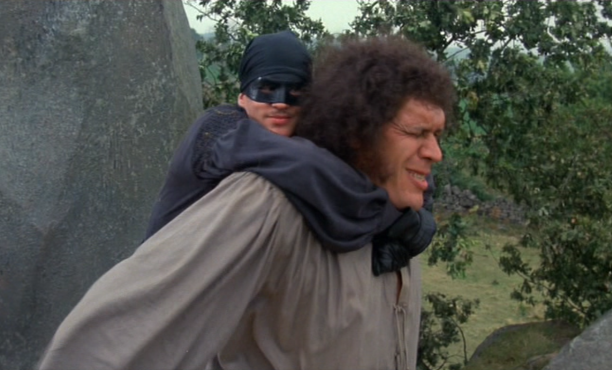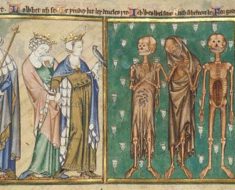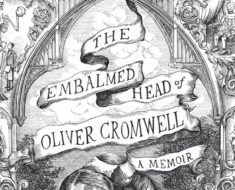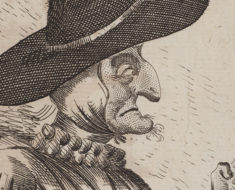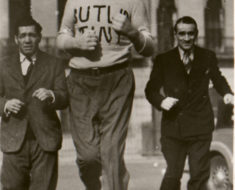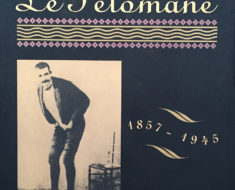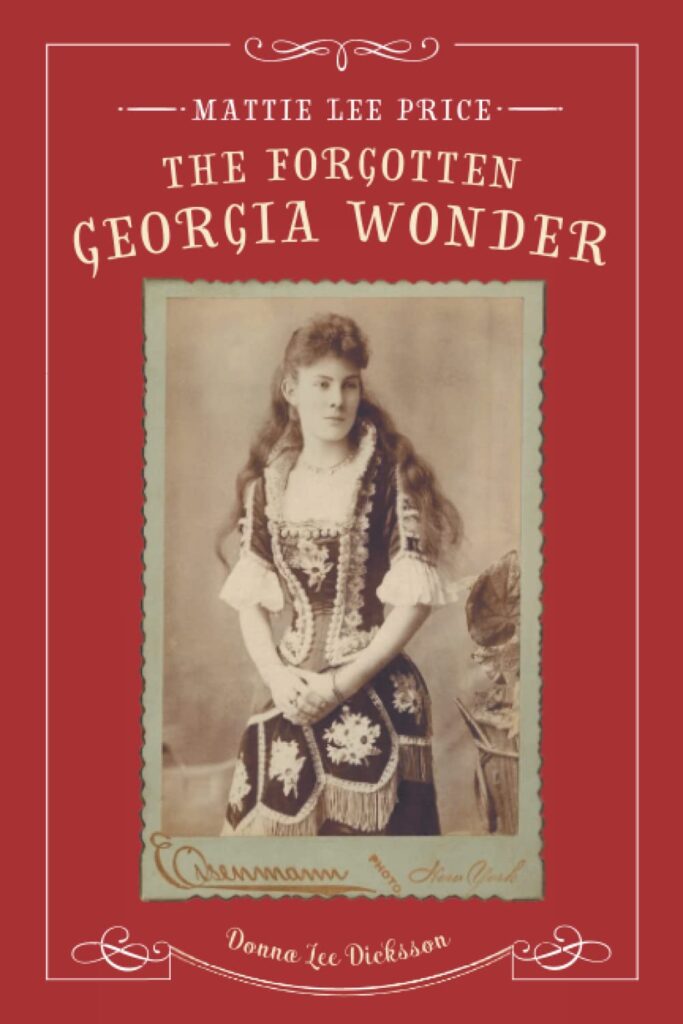
In March 2013, a writer named Donna Lee Dicksson reached out to me through Facebook asking if I knew anything about her great-grandmother, Mattie Lee Price. She had read my book, American Sideshow, and hoped I might be able to offer information about Price, a performer in the late nineteenth century whose act involved remarkable feats of strength.
I was unable to help, not just because she was someone I hadn’t researched or read about, but also because Dicksson’s note remained hidden away in Facebook Messenger’s “Message requests” section until just a few months ago—when I finally found it and responded. To my delight, she wrote back and nine years later she had already written Mattie Lee Price: The Forgotten Georgia Wonder.
Dicksson’s book gave Price’s story new life for both her family and for all of us fascinated by the history of sideshow and its extraordinary performers. Her great-grandmother’s career began in January 1884 after witnessing a 15-year-old woman named Lulu Hurst, billed as the “Electric Girl,” effortlessly lift several men seated in a chair. Price, who was just 14 at the time, went home and found that she could mimic the act. Like Hurst, she soon found herself performing amazing feats of strength on stage and making good money (according to newspapers at the time, she earned $1,000 a week).
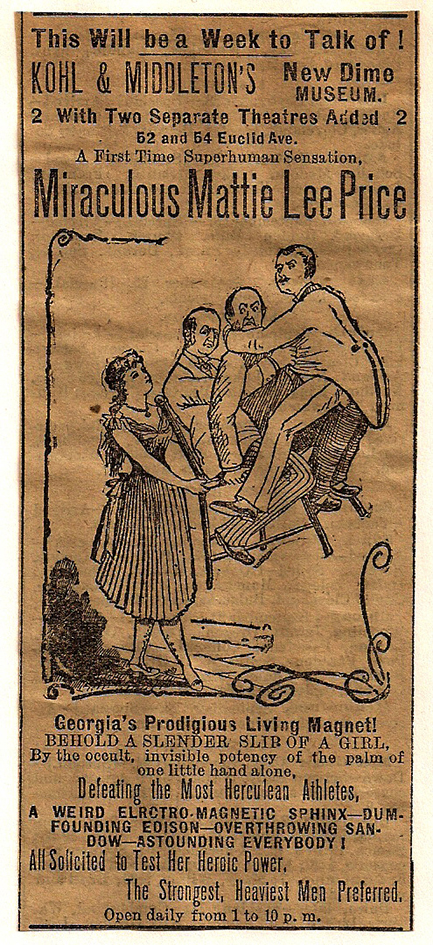
Some believed she harnessed unusual powers of electricity, while others suspected she’d been employed little known principles of physics to dazzle her audiences.
“Strength and skill probably account for the feats of Mattie Lee Price—with perhaps a dash of Nature thrown in,” wrote one journalist in 1898. “How otherwise can you account for this charming, delicate, womanly woman lifting from the ground by the mere touch of her hand a chair loaded with three stalwart men?”
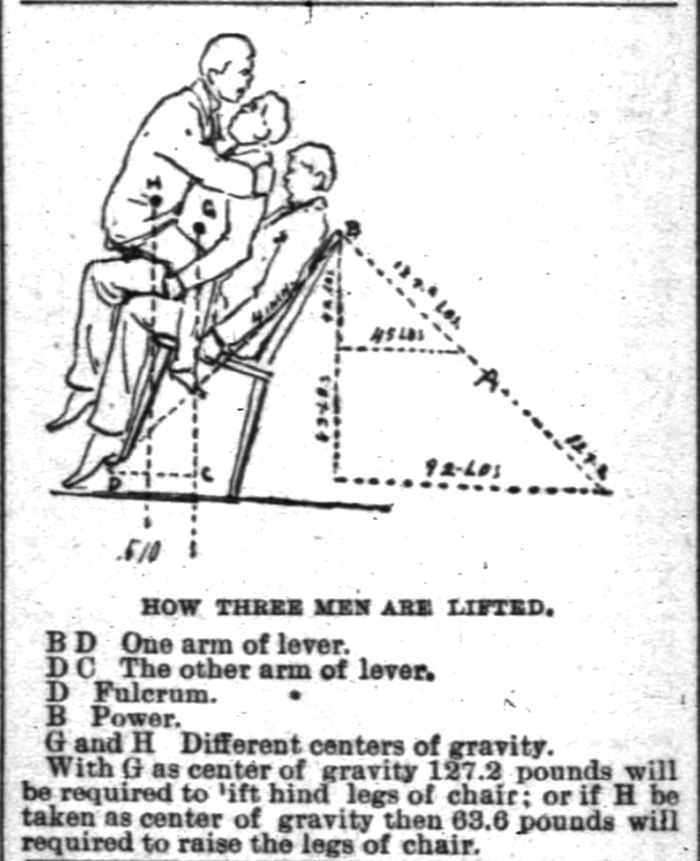
The Forgotten Georgia Wonder tells Price’s story, along with Dicksson’s own process of discovering her family history and digging up details from her great-grandmother’s life. I emailed her about her unique journey into the curious past:
How much about Mattie Lee Price was already known in the family, and how long did you spend researching everything else about your great grandmother?
Almost nothing was known about Mattie Lee Price in our family. They said she was an acrobat who rode on the backs of the white horses and that she died when she fell off a horse while in London with Barnum & Bailey. We believed she was good with animals and physically gifted with a graceful athletic body. In truth she was in the sideshow, so maybe they promoted her to a main event circus act to make the legend sound nicer.
While I sought information my whole life, it wasn’t until the Internet blossomed that bits and pieces began popping up. I connected with Mattie’s son’s family in 1999. In 2012 we finally uncovered her true name and occupation. I spent three more years researching as time allowed. Every time I uncovered one “fact,” another discovery would discredit it. I gathered many articles from the same period and averaged the results to ascertain a probable truth. The research is ongoing. I still love it.
Did your family speak fondly of her when you were growing up? Or was her life kept quiet?
Mattie’s daughter (my grandmother, Jenny) was a very quiet and minimally educated person who married into a strict Seventh Day Adventist family. Jenny was the only person in our family to have first-hand knowledge of Mattie. I got the feeling that she was looked-down-upon as she was simple and quiet. Mattie’s children probably didn’t spend a lot of time with their mother because kids were usually farmed out during the circus-traveling season. My grandmother was only thirteen when Mattie died, so it is uncertain if she even understood what her mother did for a living. It was a lucky discovery to find both of her children on the boat to England in 1898. That one discovery was the FIRST and ONLY actual evidence of the children’s connection to their mother. Now we have DNA evidence connecting all parts of the family, although the fathers of the children are still enigmas.
How would you explain her act and how she achieved it?
Mattie’s act was probably achieved through her intuition and the observation of Lula Hurst. Mattie had no formal schooling, so she could never have understood the science. She was a very small and slender girl living on a cotton farm with five very young siblings. Small people learn how to manipulate their environment to be able to accomplish feats easily done by bigger people. Her size disadvantage would have given her incentive to be creative in finding new and better ways to lift and move things on the farm. I also believe that Mattie had a specific body build that allowed her to apply and use leverage better than most.
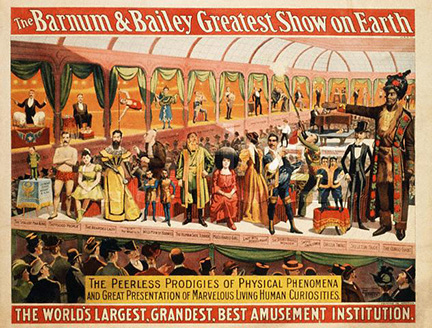
How would her act fare today? Perhaps she’d be an America’s Got Talent finalist?
Mattie’s act would not be interesting in today’s world unless it was modernized. When she was on stage, electricity and magnetism were not yet understood. Her mysterious “force” was intriguing. Since there was no television or Internet to make her act mundane, she was able to find new audiences and entertain them successfully. However, I do believe she had a unique ability to use force and leverage and those talents could be put to use in a stage act today. Someone is probably doing it somewhere.
You mentioned that you also have the ability to lift an impressive amount of weight. Tell me about your skill, and how does it compare?
It is hard to compare myself to Mattie Lee Price, but I will say that discovering her was life-affirming. I always appeared different from my relatives like I didn’t really belong, so I was happy to find someone who looked like me. I had four different hair colors (brown, red, blonde, black) like Mattie and had a similar body size, shape and lifting capabilities at her age. Since I am of small stature, I had to learn to keep up with bigger kids physically. I didn’t find it difficult to climb trees or cliffs and when my middle-school classmates were struggling with one or two pull-ups, I was counting them off by the tens without effort. I learned about center of gravity in school at around age twelve. From that day, I thought of myself as having a unique body build which provided an advantageous center of gravity to lift and move things. Other people have their talents. That was mine. I never thought more about it. The second part of the equation is intuition. I’ve always been good at solving problems. I cannot recite the science; I just see a solution. That is why I believe Mattie did her act intuitively after having witnessed Lula Hurst. I probably would have been able to do those things as a young woman.
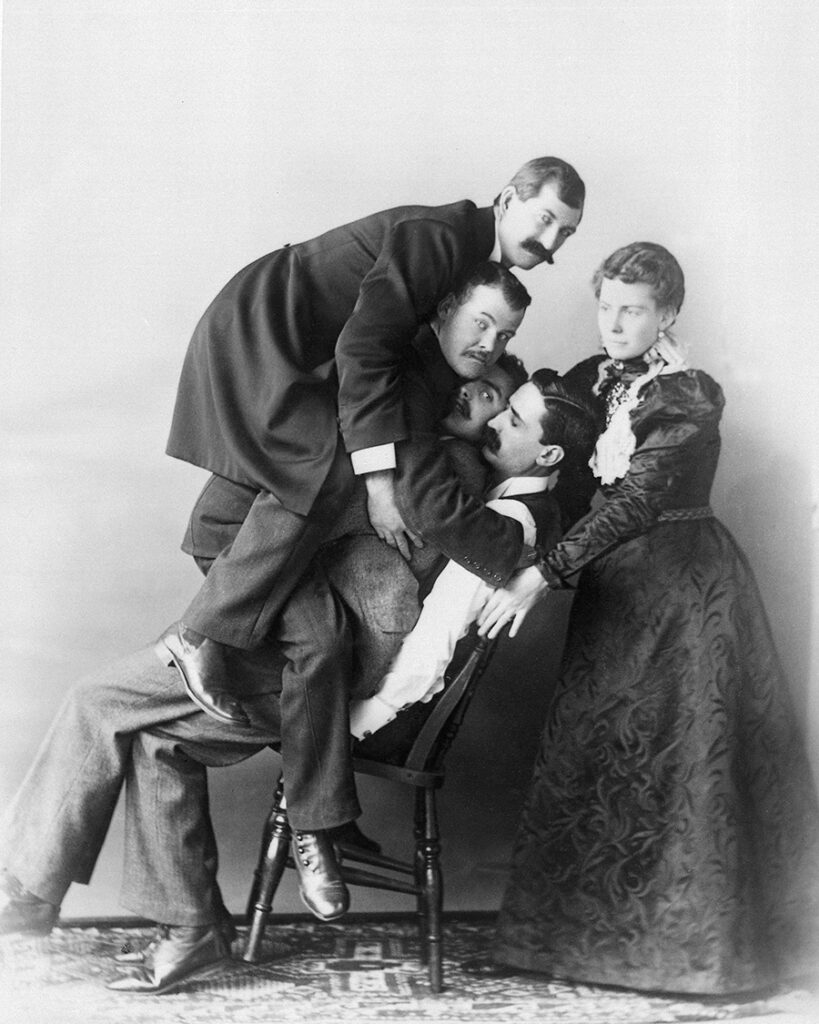
If you could see any of the sideshow performers that exhibited themselves alongside Mattie, who would it be? Why?
I would like to meet Annie Jones, the bearded lady. She was more or less sold to the Barnum show, was kidnapped once (to exhibit and make money), found and then put on the road again. She fell in love with the son of the wardrobe mistress, but they were not allowed to marry because of circus culture. She married a drunk instead, later to divorce him and eventually marry her sweetheart despite the culture which forbade it. We learn from our difficulties, and therefore she must have had a lot of wisdom to share. I would love to meet Jo Jo the dog-faced boy and Tripp, the armless wonder. On second thought, I would like to meet all of them.
How has it felt knowing your book is keeping Mattie alive—knowing she can continue to amaze people?
The people shown on those old Victorian circus posters are not freaks or ne’er-do-wells, they are human beings… real flesh and blood people with a life story. I wanted people to be able to read Mattie’s story and maybe get to know her off-stage.
In today’s pop culture and social-media-kangaroo-courts, people are judged and destroyed by opinions, mobbing, and false accusations. I hope that anyone who reads Mattie’s story will give pause when they read something sensational and question conclusions by seeking out “the rest of the story.” I believe a book should change how you think about the world. It is my hope that anyone reading Mattie’s story will appreciate the difficult but glorious life she led and although it was a short life, she did more in fifteen years than most of us do in a lifetime. And she did it with grace. In years of research, I never came across a single negative word about her. Not one. That, my friend, is amazing.
Want to read more about Mattie Lee Price? Purchase Mattie Lee Price: The Forgotten Georgia Wonder on Amazon.

